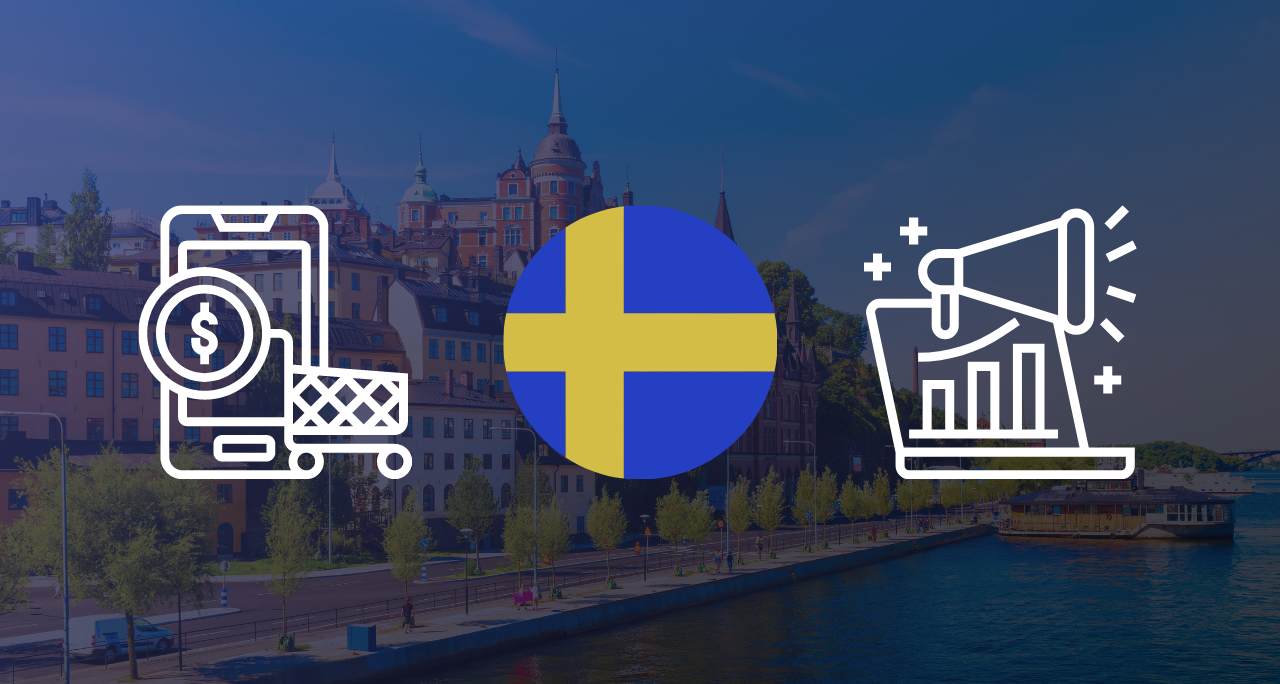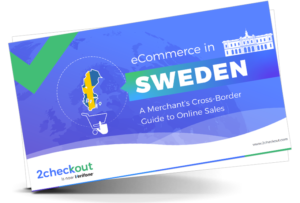Sweden, a Scandinavian country with just over 10 million people, has long been known as a positive example for its citizens’ digital proficiency, wealth and social responsibility.
Still, however, not many know of its business potential, especially in terms of eCommerce. Their population may not be huge, but they’ve managed to have high cash reserves, keep debt low, and went through several waves of the pandemic in relatively good condition.
The Swedes are known to be fluent English speakers, wealthy, digitally inclined, and socially conscious. The country’s high per capita GDP of more than $55K further supports this argument, as the Swedes have more buying power per individual compared to 95% of the world.
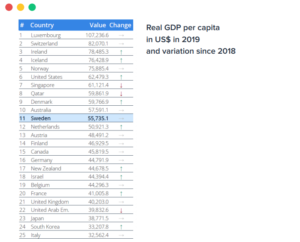
Source: Statista
This should come as great news to the eCommerce community, and it’s only just the beginning.
A developed yet under-tapped eCommerce market
Even though Sweden has a high eCommerce penetration rate, 73% of the country, there is still room to grow, forecasts predicting 84% eCommerce penetration by 2024. This presents an opportunity for established merchants and also newcomers alike. However, achieving success in this market calls for a good understanding of the Swedes’ particular preferences: If you don’t have the products they want, at the price they desire, you may see them buying from someone else across the border.
With the majority of the country proficient in English, it should be no surprise that Swedes buy from English-speaking countries, like the UK, Germany, and even China. In fact, in 2018-2019, almost half of the nationals in this market (49%) shopped across the border at least one time.
And it’s not only online shopping that has seen significant growth. Online service subscriptions have also demonstrated a robust YoY growth in the country, led by categories like Over-the-top Video or digital music services. Analysts predict revenue in the digital video market in the country to pass $1 billion by 2025.
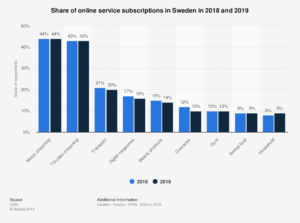
Source: Statista
It’s also worth mentioning that their B2B market also comes with potential, having one of the highest penetration rates for enterprises selling online in Europe, at 18%.
Sweden’s software eCommerce market is also a considerable contributor to digital revenue growth in the country. With a forecast YoY growth of 7.42% over the next four years, this market is expected to pass the $7 billion mark by 2025. More specifically, enterprise software, which makes up 40% of the category, has seen a big increase over several years and is expected to hit $2.19 billion by the end of this year.

Selling online in Sweden
Given Sweden’s embrace of technology, it is no surprise that its consumers are adopting FinTech into their daily lives and have been a driving force for the development of eCommerce in the country. As a result, companies like Swish and Klarna came to life in this market. Even the Swedish central bank, Riksbank, is beginning to explore introducing a digital currency, e-Krona.
As a result, most Swedes prefer to pay for their online orders with digital payment methods. More specifically, Swish, a mobile app that allows individuals and companies to transfer bank funds among themselves, has seen its adoption go from 19% to 94% since 2014. In 2019, bank transfers made up 32% of all online payments in Sweden, topped only by credit and debit cards (38%) and followed by open invoices (19%) and digital wallets (5%). This distribution is moving the country closer and closer towards a cashless society, and the sellers’ ability to accept multiple online payment methods will be crucial in achieving market relevance.
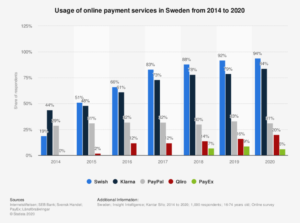
Source: Statista
This is especially true if you are a cross-border seller, as you need to make sure that you have popular Sweden payment methods and local favorites like Trustly, Klarna, and Qliro included in your checkouts. But, as necessary as the inclusion of these payment methods is, it doesn’t end there… Your checkout experience needs to be native too! Even if one out of three purchases is made cross border, a native experience for Swedish shoppers, one that localizes for their language and currency, can also boost your conversion rate by 4%, as 2Checkout platform data shows.
A localized checkout experience also comes with a higher average order value too! Swedes are known to have an AOV of $75per session, and they come close to the US average by only a few dollars. So, you can see excellent conversions if you give consumers the buying journeys they expect and collect more of the $1,518 Swedes spend online in an average year.
Regulations and taxes in the Swedish market
Considering that Sweden is part of the EU, it has been under the General Data Privacy Regulation, otherwise known as GDPR, since May 25, 2018. Therefore, as a merchant in Sweden, you have to be aware of privacy regulations when processing and collecting data from clients, employees, users, and others, or you may hear from the Swedish Authority for Privacy Protection (IMY). This organization is responsible for enforcing the GDPR in the country. They will process complaints, provide data protection for data processors, and assist organizations with GDPR compliance.
As far as taxation goes, Sweden is under EU VAT tax rules and in 2021 the country imposes a VAT rate of 25%. As an eCommerce company, it is crucial to be aware of these rules and know that you have to register with the applicable Swedish tax authority within 14 days of first doing business in the country. You could actually qualify for a nil registration threshold, especially if you are a non-resident business.
Get started selling in Sweden
So with this information in mind, how can you get started in Sweden’s eCommerce market?
By now, you’re probably already sold on the potential of Sweden for digital sales, and you see future opportunities for business growth. Ready to learn more? We invite you to read our full report for deeper insights that will give you a critical edge when entering the Swedish market.

